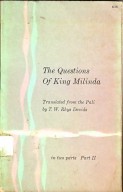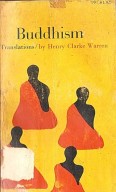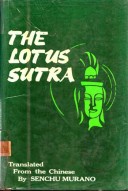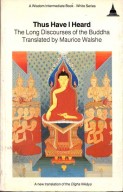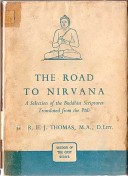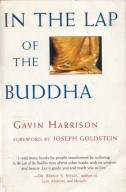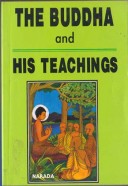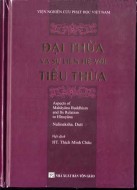Tìm Sách
Sách tiếng Anh-English >> A New Zen Reader
Thông tin tra cứu
- Tên sách : A New Zen Reader
- Tác giả : Nelson Foster & Jack Shoemaker
- Dịch giả :
- Ngôn ngữ : Anh
- Số trang : 274
- Nhà xuất bản : The Ecco Press
- Năm xuất bản : 1996
- Phân loại : Sách tiếng Anh-English
- MCB : 1210000008184
- OPAC :
- Tóm tắt :
FOREWORD
ON BOOKS AND READING FOR THE ZEN STUDENT
My life as a Zen Buddhist began with a good book, in a civilian internment camp in Kobe, Japan. One evening during the second winter of the Pacific War, a guard entered my dorm, waving a book, and mumbling drunkenly, “This book, my English teacher,…” Rising involuntarily from my bed, I boldly took it from his hand—and never gave it back. It was R. H. Blyth’s Zen in English Literature and Oriental Classics, then recently published.
The world had been readying me for a long time. Until then, my preferred camp reading had been Miyamori’s Haiku, Ancient and Modern, but the path of my preparation ran all the way back through my young adulthood in Honolulu to evenings as a small child, sitting on the carpet at my grandfather’s feet with my brother and little cousins, absorbing a range of poems by Heine, Goethe, Bums, Longfellow, and Walter de la Mare.
I was probably also readied by the state of the world at war and by my own health—freezing cold had exacerbated my chronic asthma. In any case, when I got back in my bunk, opened the plain cover of Blyth’s book, I had been searching for it all my life without knowing its title, its author, or its subject. As I read Blyth’s words over and over, new and marvelous vistas of culture and thought opened for me. I felt that I was uncovering primordial configurations of myself. Now as I look at the book, its flaws and mistakes jump out at me, but at the time it was the communiqué I was unconsciously awaiting.
The great mystery of that encounter with Mr. Blyth’s words has recurred many times in the ensuing half-century. Again and again, books have opened my eyes to the Dharma, shaken me out of superficial views and commonplace understanding, and even led me to good teachers. These experiences put the lie to the commonly heard notion that reading and study are at odds with Zen practice and with religious life generally.
Among the sources of this misunderstanding are the warnings given by Ch’an and Zen teachers themselves, past and present. Musõ Soseki, the early Japanese master whose work has an honored place in this volume, declared in his Admonitions:
I have three sorts of disciples. The best are those who resolutely give up all worldly relationships and devote themselves wholly to seeking and realizing their own true natures. The middle sort are not really earnest in Zen practice, and in order to find distraction from it prefer to read about it in books. The lowest are those who eclipse the light of their self-nature and do nothing but lick up the Buddhas spit.
Regrettably, Zen Buddhist teachers in Asia—and in the Americas and Europe as well—consider that books as such encourage a preoccupation with “the Buddha’s spit.” They advise their students to be single-minded in their practice and not read anything at all. This is an egregious corruption of Muso’s message and an abuse of his eminent teachers, colleagues, and successors, all of whom, as we know from their writings, were readers and writers at a high level, thoroughly immersed in their religious, and indeed their literary tradition.
Admittedly, there may come a point in Zen study when reading should be indeed set aside. The classic case is Hsiang-yen, a former student of Pai-chang, who was confronted with a tough question by his new teacher, Kuei-shan. He ransacked all the notes he had made of Pai-chang s talks, but couldn’t come up with anything remotely suitable. Finally, with Kuei-shan’s help, he realized that a secondhand understanding would never satisfy his hunger for realization. Exclaiming “A painting of cakes won’t fill the belly!” he went off to face his question in solitude.
Except for such crucial, usually quite brief intervals, it is generally very important for Zen students to read. Since our needs as readers vary widely from individual to individual and from one point in life to another, when students ask me what to read, I give them a current bibliography, but I also tell them, “Follow your nose.” Go to the library or bookstore, pull down books and look at them. Trust yourself to discover the right one. Perhaps it will be a book that will awaken you to bodhichitta, the imperative for realization and compassion. But next year, when you revisit the same library or bookstore, you will discover books that you passed over the first time.
In the years when I was establishing my Zen practice, the need for a portable compendium of Ch’an and Zen literature was met by D. T. Suzuki’s Manual of Zen Buddhism, which I read in my internment-camp days. Though it included relatively few translations and was even then quite archaic in its English style, it served us well, and it was an important resource for thinkers of that period. Aldous Huxley placed it on his list of ten books he would take to a desert island.
Today, however, the Manual and books of its era are quite dated. In the past thirty years, translators, historians, and Zen teachers and students have rendered an astonishingly large portion of the original literature into English. Back in the early 1950s, even those bookshops that specialized in Asian books offered only half a shelf of Mahãyana Buddhist titles, with important traditions not represented at all. Now the situation is reversed, and we find a formidable array, more books, it seems, than we can possibly read. This great corpus gives us variety and detail, as well as important perspectives that were not evident earlier. For example, such key figures as Bodhidharma and Hui-neng shift to some degree from history to the edges of misty folklore, and yet at the same time their teachings become clarified, and we learn the importance of folklore itself—to our practice and to our spiritual maturity.
The Roaring Stream puts the fruits of these great labors in our hands. It brings together a wealth of material already published, but never before available in a single volume, plus a few translations appearing for the first time. You can dip into the waters of this stream, again and again, at any point finding refreshment and perspective on Ch’an and Zen as practice, as presentation of the Main Fact, and as a culture and tradition. A year from now you can dip again and find treasures that were not at all evident the first time.
Moreover, you can get acquainted with the old teachers as individuals. The advisor to the emperor and the poet in a cave are very different fellows. Their words differ, their manner differs, their social views differ. Yet read side by side in this volume, their intimate kinship in the Buddha-Dharma becomes evident, their intimate kinship with US in our own living rooms today becomes clear, and our understanding of the Buddha-Dharma itself is vastly enriched.
—Robert Aitken
CONTENTS
Foreword by Robert Aitken………………ix
Introduction by Nelson Foster and Jack Shoemaker………………xiii
CHINA
1: Bodhidharma………………3
2: Seng-ts’an………………10
3: Hui-neng………………16
4: Yung-chia………………22
5: Wang Wei………………33
6: Shih-t’ou………………38
7: Ma-tsu………………44
8: Han-shan………………50
9: Pai-chang………………57
10: The P’ang Family………………64
11: Nan-chuan………………70
12: Kuei-shan………………77
13: Po Chu-i………………83
14: Huang-po………………90
15: Chao-chou………………96
16: Te-shan………………03
17: Lin-chi………………107
18: Tung-shan………………115
19: Hsueh-feng………………125
20: Ts’ao-shan………………132
21: Yun-men………………138
22: Fa-yen………………145
23: Hsueh-tou………………152
24: Su Tung-po………………157
25: Yủan-wu………………166
26: Hung-chih………………176
27: Ta-hui………………184
28: Shih-wu………………195
JAPAN
29: Dõgen………………20 5
30: Enni Ben’en………………218
31: Daikaku………………223
32: Keizan………………229
33: Musõ………………239
34: Daitõ………………247
35: Jakushitsu………………254
36: Bassui………………260
37: Ikkyũ………………267
38: Takưan………………274
39: Ishikawa Jozan………………283
40: Shidỏ Munan………………288
41: Bankei………………296
42: Bashõ………………304
43: Baisaõ………………314
44: Hakuin………………321
45: Tõrei………………336
46: Ryỏkan………………342
Sources and Resources………………351
Copyright Acknowledgments………………369
 Facebook
Facebook
 Google
Google
 Google+
Google+

